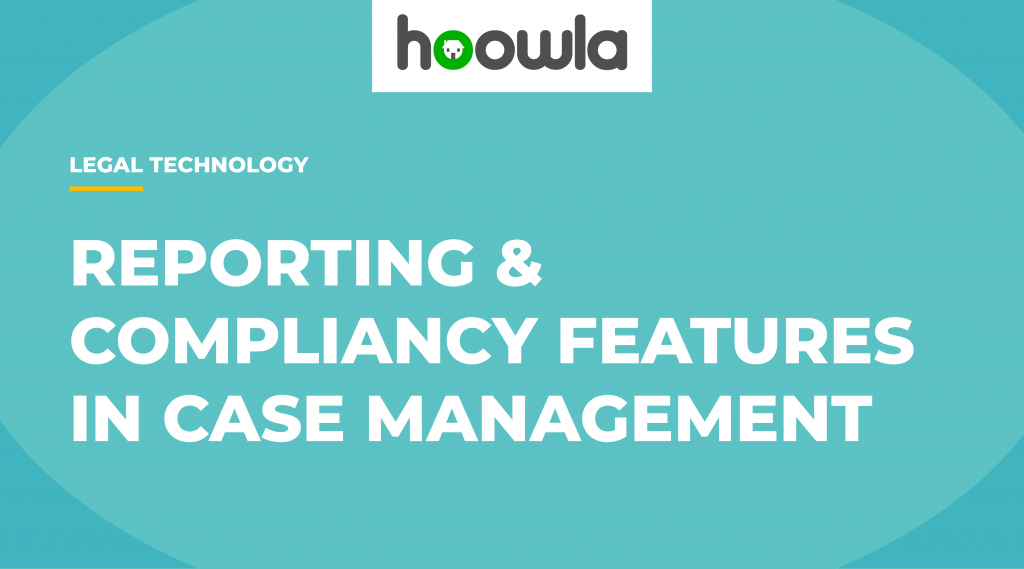
A reporting system in case management software provides significant benefits to legal professionals and compliance departments. It can empower you to make informed decisions based on data analysis and trend identification by aggregating data across various cases, clients, or compliance initiatives; professionals can uncover patterns, correlations, and recurring issues that may not be immediately apparent at the individual case level. This allows you to take proactive measures, update internal policies, and adjust legal strategies accordingly.
Additionally, a reporting system enables efficient resource allocation and optimisation. By analysing case types, durations, and resource utilisation data, your team, including compliance departments, can ensure that personnel, time, and budget are allocated effectively. This helps balance workloads, identify areas of over or underutilisation, and ensure that the right resources are assigned to critical matters.
Cost control and budget management are also improved using reporting systems. You can track costs associated with different cases, including legal, research, and court fees. By comparing actual costs against budgets, you can identify cost-saving opportunities and make informed decisions regarding resource allocation.
Not only that but reporting systems play a crucial role in compliance management. They can allow compliance departments to monitor regulatory adherence and identify potential risks or non-compliance trends. Reports can include data on adherence to legal guidelines, compliance with internal policies, and risk assessments. This enables proactive risk management, timely interventions, and the implementation of corrective measures. Compliance professionals can also leverage reporting systems to generate client-specific reports, providing transparency and promoting effective communication. Clients can receive updates on the case progress, milestones achieved, and expenses incurred, fostering trust and strengthening client relationships.
If you’re looking for a new case management provider, ensure that they offer customisable reports tailored to the specific needs of legal professionals and compliance departments. The system should offer a variety of report templates and options for data visualisation, allowing professionals to present information clearly and concisely. Advanced reporting features like analytics and predictive modelling can provide deeper insights into case outcomes, compliance risks, or resource planning. If they don’t offer one that suits you upfront, a good provider will always try to accommodate you by providing an alternative.
At Hoowla, we offer a range of reporting features designed to provide valuable insights and analytics for you and your team.
Hoowla allows you to create customised reports tailored to their specific needs. You can select the desired data fields and apply date filters. Our platform will generate a spreadsheet report that provides relevant and actionable information. To complement this, we also offer to create reports that give an overview of case statuses, including open, closed, or pending cases. These reports help track the progress of cases and identify bottlenecks or delays. Another workflow feature is that you can generate reports related to document generation, such as the number of documents created, document status, or document versioning. These reports help ensure document accuracy, track workflow, and improve management efficiency.
Hoowla enables you to generate reports that measure key performance metrics, such as case resolution time and task completion rates. These reports help evaluate individual and team performance, identify areas for improvement, and recognise top performers. Hoowla has a feature that monitors to-dos assigned to people, you can see an overview of an individual or team, and if you believe tasks are falling behind because an individual has too much on their workload, you can reassign it to someone else to action quicker. Not only that, but each case will also have its own report or timeline; every action taken in a case, such as an email, to-do, or asset deletion, is recorded, so your team can pick up where another left off and foster an environment for accountability.
If you’re part of the accounts team, you can utilise reporting features, including financial reports that provide insights into billing, invoicing, and financial performance. Users can generate reports on billed hours, outstanding payments, revenue by case or client, and more. These reports assist in financial management and tracking profitability.
Our compliance reporting feature allows users to monitor and assess regulatory adherence in terms of external legal guidelines and internal policies. Users can generate comprehensive reports that include data on adherence to legal procedures, compliance with internal policies, and risk assessments. These reports aid in proactive risk management and compliance monitoring by providing valuable insights into compliance status and identifying areas for improvement. By analysing compliance data within the reporting system, legal professionals can mitigate legal and regulatory risks, ensure adherence to internal policies, and foster a culture of compliance within the organisation.
Last, you can create data visualisation options to present information in a visual and easily understandable format. You can generate charts, graphs, or other visual representations of data, making identifying trends, patterns, or anomalies more straightforward.
